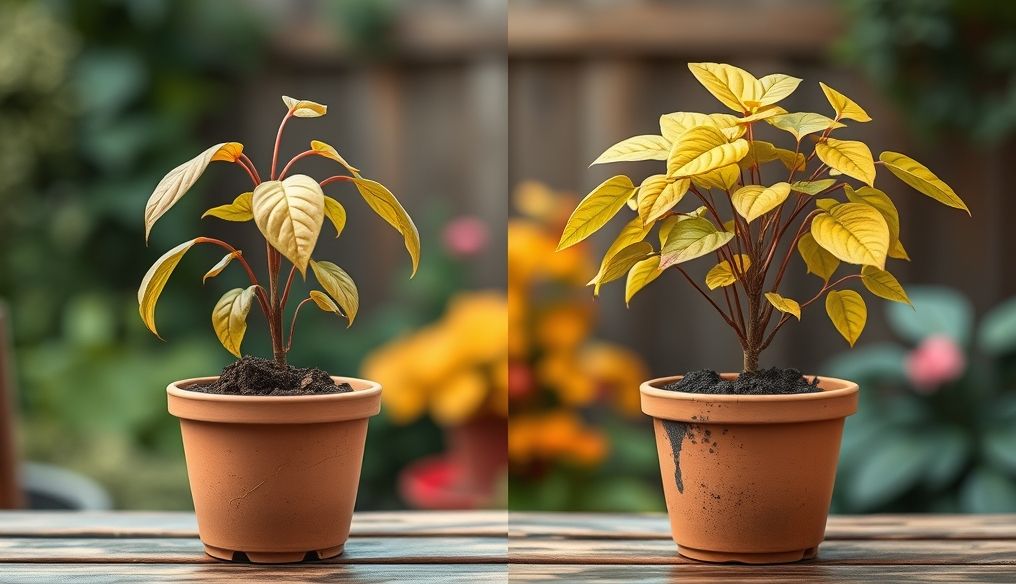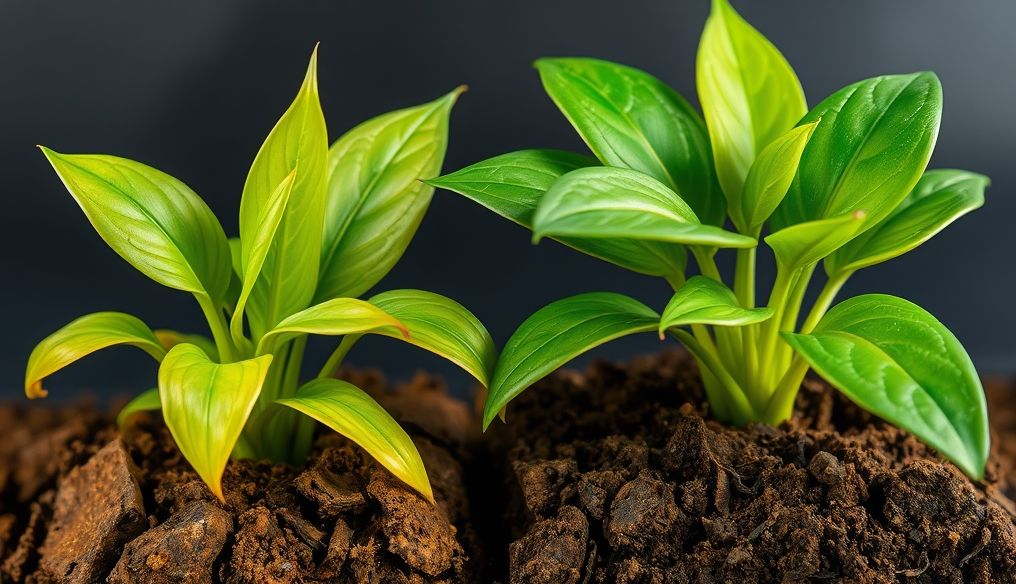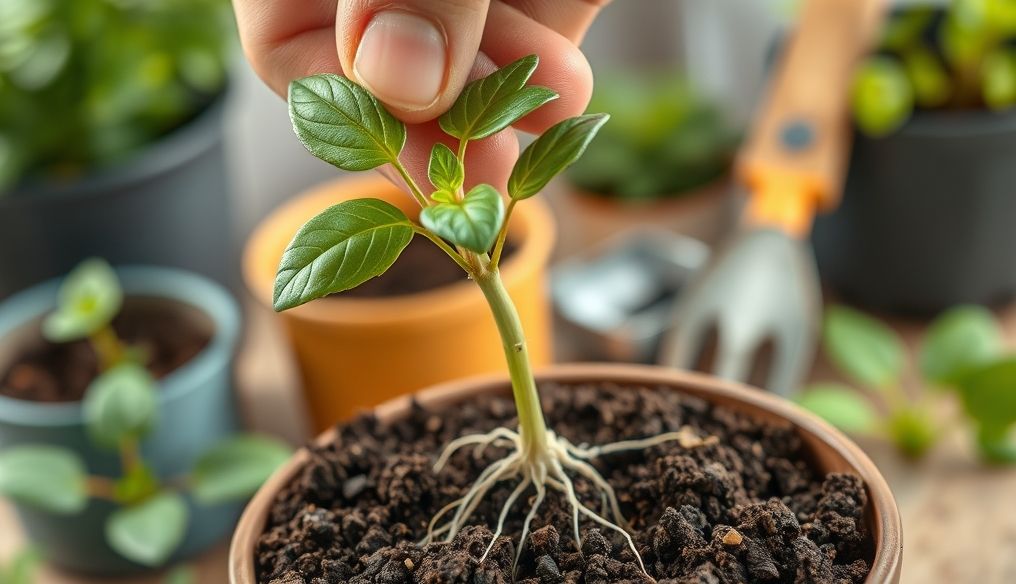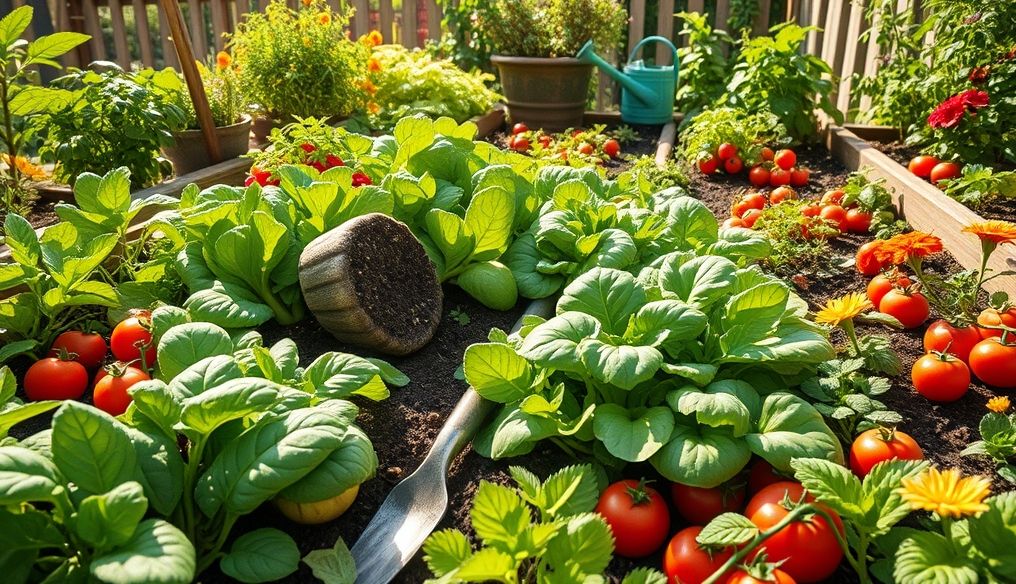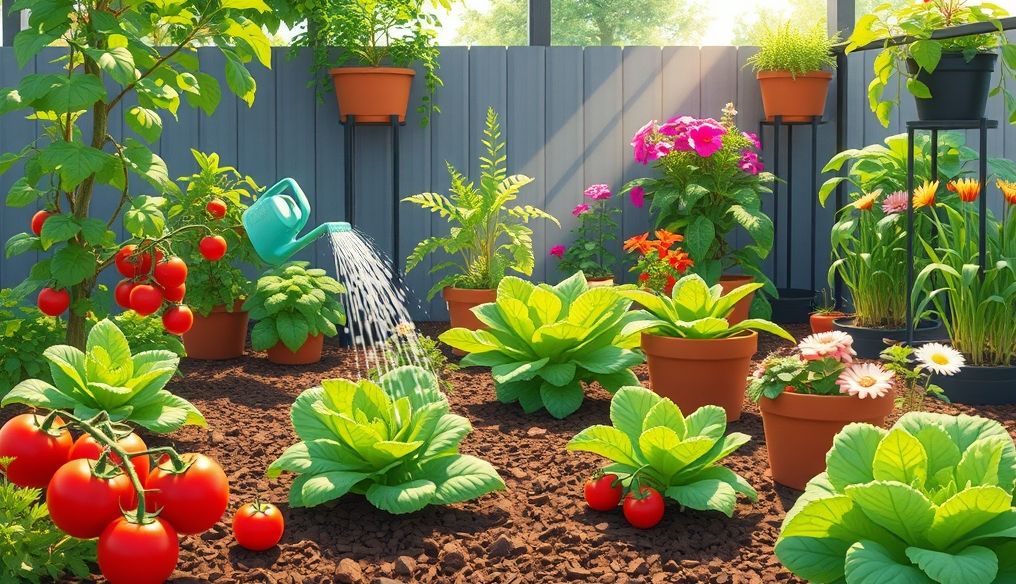Introduction: The Importance of Proper Watering for Plants
Water is the foundation of life, and this also applies to plants. Watering plays a vital role in photosynthesis, nutrient transport, and maintaining cell structure. However, overwatering or underwatering can lead to serious problems that threaten the plant's life.
Chapter 1: Signs of Underwatering in Plants
1.1 Wilting
Wilting is the most obvious sign of underwatering. When plants don't get enough water, their cells lose turgor pressure, causing the leaves and stems to droop.
Example: If you notice that the leaves of a tomato plant are drooping in the middle of the day, it often indicates a lack of water.
1.2 Dry Soil
Check the soil moisture by inserting your finger into the soil 2-3 cm deep. If the soil is completely dry, it means the plant is suffering from a lack of water.
Tip: Use a soil moisture meter for an accurate reading.
1.3 Slow Growth
Lack of water can hinder the normal growth of the plant. You may notice that the plant is not producing new leaves or that the existing leaves are small and deformed.
Statistic: Studies have shown that a 20% water deficit can reduce plant growth by up to 50%.
1.4 Yellowing of Lower Leaves
In some cases, the lower leaves may begin to yellow and dry out due to lack of water. This happens because the plant is drawing water from the old leaves to maintain the new leaves.
1.5 Curling of Leaf Edges
The edges of the leaves may curl and become brittle and dry when there is a lack of water. This happens because the leaves lose moisture quickly.
Chapter 2: Signs of Overwatering in Plants
2.1 Yellowing of Upper Leaves
Unlike underwatering, overwatering can lead to yellowing of the upper leaves. This happens because the roots cannot get enough oxygen due to the waterlogged soil.
2.2 Constantly Moist Soil
If the soil is constantly moist even after several days of watering, it indicates that the plant is receiving too much water.
Warning: Constantly moist soil can lead to root rot.
2.3 Mold Growth
Mold may appear on the surface of the soil or on the lower leaves due to excessive moisture. This indicates an ideal environment for fungal growth.
2.4 Swollen Leaves
The leaves may swell and become thick due to absorbing too much water. This can lead to damage to plant tissues.
2.5 Leaf Drop
In severe cases, leaves may begin to fall off due to overwatering. This happens because the roots cannot provide water and nutrients to the leaves.
Chapter 3: Causes of Overwatering or Underwatering in Plants
3.1 Soil Type
The type of soil affects its ability to retain water. Sandy soil drains water quickly, while clay soil retains water for longer.
Tip: Use soil suitable for the type of plant you are growing.
3.2 Climate
Temperature and humidity affect the plant's need for water. In hot and dry weather, plants need more water.
Example: Plants grown in the desert need less water than plants grown in humid areas.
3.3 Pot Size
The size of the pot affects the amount of water the soil can hold. Plants grown in small pots need to be watered more frequently.
3.4 Plant Type
Plant water requirements vary by type. Some plants tolerate drought, while others need regular watering.
Example: Cacti tolerate drought, while ferns need high humidity.
3.5 Drainage
Poor drainage can lead to water accumulation in the soil, causing overwatering. Make sure there are enough drainage holes in the pot.
Chapter 4: Methods to Treat Underwatering
4.1 Deep Watering
Deep watering means watering the plants with a large amount of water until the soil is completely saturated. This helps to hydrate the deep roots.
Tip: Water deeply in the early morning or evening to avoid water loss due to evaporation.
4.2 Increase Watering Frequency
If the plants are suffering from a lack of water, increase the frequency of watering. Monitor soil moisture regularly to determine when the plants need water.
4.3 Use Mulch
Mulch helps retain moisture in the soil and reduce evaporation. Place a layer of mulch around the plants to keep the soil moist.
Example: Use wood chips, straw, or leaves.
4.4 Improve Soil
If the soil is sandy and drains water quickly, improve it by adding organic matter such as compost or peat moss.
Chapter 5: Methods to Treat Overwatering
5.1 Stop Watering
If the plants are suffering from overwatering, stop watering until the soil is completely dry.
5.2 Improve Drainage
Make sure there are enough drainage holes in the pot. If the drainage is poor, move the plant to another pot with better drainage holes.
5.3 Change the Soil
If the soil is waterlogged and clumpy, replace it with new, well-draining soil.
5.4 Aerate the Soil
Aerate the soil with a stick or fork to increase airflow to the roots.
5.5 Use a Fungicide
If mold appears on the plants, use a fungicide to control the infection.
Chapter 6: Tips for Proper Watering
6.1 Check Soil Moisture
Check soil moisture regularly before watering. Don't rely on a set schedule, but rely on the plant's needs.
6.2 Use Lukewarm Water
Use lukewarm water for watering. Water that is too cold or too hot can shock the plant.
6.3 Water in the Early Morning or Evening
Water in the early morning or evening to avoid water loss due to evaporation.
6.4 Avoid Overwatering
Avoid overwatering. Overwatering can be more harmful than underwatering.
6.5 Use a Drip Irrigation System
If you are growing a large number of plants, consider using a drip irrigation system to save water and reduce waste.
Chapter 7: Practical Examples of Proper Watering
7.1 Watering Indoor Potted Plants
The water needs of indoor potted plants vary by type. In general, these plants need to be watered once a week or every two weeks. Check soil moisture before watering.
7.2 Watering Vegetable Plants
Vegetable plants need regular watering, especially during the fruiting period. Water deeply once or twice a week, depending on the weather and soil type.
7.3 Watering Trees and Shrubs
Trees and shrubs need deep watering once a month during the summer. During the winter, the frequency of watering can be reduced.
Chapter 8: Conclusion
Understanding the signs of overwatering or underwatering in plants is key to maintaining their health and flourishing. By monitoring plants regularly and adjusting watering habits according to their needs, you can ensure they get the right amount of water.
